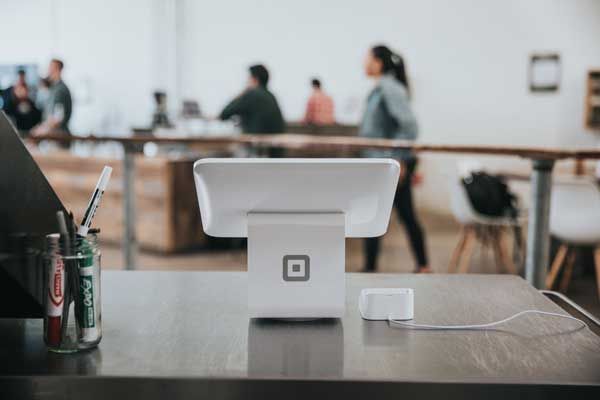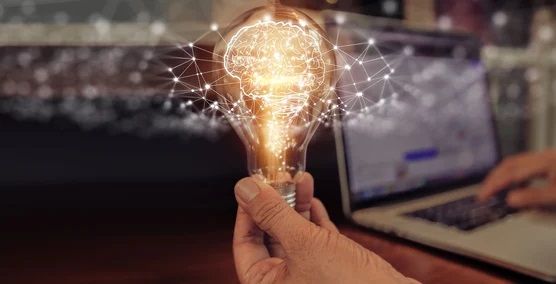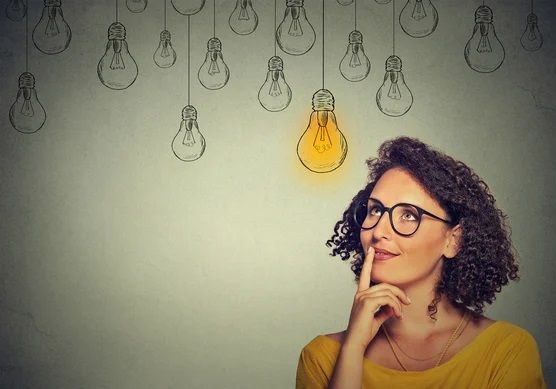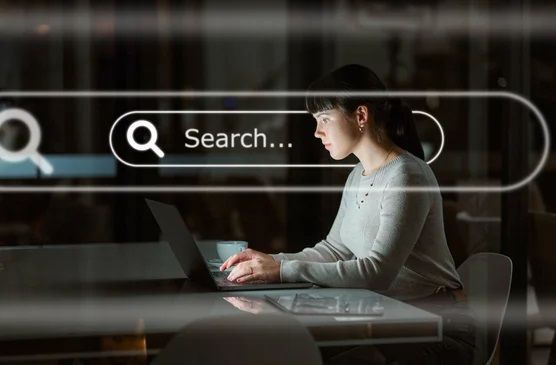Digital Marketing Guide: Create a Marketing Funnel

Summary: Creating an effective marketing funnel to generate leads and drive sales is an all-important step in any digital marketing strategy.
Editor’s Note: This post was originally published in June 2019 and has been updated with additional content in December 2021.
A marketing funnel comprises different stages, and it breaks down the customer journey from the awareness stage to the purchasing stage. According to Sprout Social, a marketing funnel lets you know what your company must do to influence consumers at certain stages to drive sales and increase brand loyalty/awareness. Unsure about using a marketing funnel in your digital marketing strategy? This guide provides more information and provides the steps to follow to get you started!
Defining the Marketing Funnel
A marketing funnel traces a customer’s journey with a business. First, it provides a visual representation of conversions and turning leads into paying customers. Just as a funnel captures large volumes at the top and then guides it out from the bottom, the marketing funnel, too, attempts to catch the attention of as many leads as possible. Next, these leads slowly move through the various stages of the funnel, finally leading to conversions, increasing brand loyalty, brand awareness, and higher sales.
The Evolution of the Marketing Funnel
Elias St. Elmo Lewis, an American advertising advocate, introduced the marketing funnel model that represented a customer’s journey and relationship in relation to a business. He thought that every purchasing decision involves four steps:
- Awareness: A lead identifies a problem or need that must be solved or fulfilled.
- Interest: The lead has viewed a particular product or service that has piqued their interest.
- Desire: The lead is now looking to engage with the brand.
- Action: At this stage, the lead decides whether to make a purchase or not.
Over the years, however, there have been a few additional stages added to the marketing funnel resulting in the following:
- Awareness
- Interest
- Consideration
- Intent
- Evaluation
- Purchase
Why is Creating an Effective Marketing Funnel Important for your Digital Marketing Strategy?
Creating an effective marketing funnel is important because, just like any other funnel, a high volume of leads enters the top of the funnel. However, as they move through each stage of the funnel, more and more leads get weeded out.
So the overarching question here is: How do I keep more leads moving through the marketing or sales funnel? Here are a few key considerations to take into account at each stage of the funnel.
Stages in Your Funnel
Stage 1: Raise Awareness
The very first step to creating an effective marketing funnel is to raise awareness for your product or service. This is the stage right before prospective customers enter the sales funnel, and it’s your time to shine and come up with creative and compelling ways to attract the right prospects.
Understand your ideal customer demographics
To create an effective marketing funnel, research always comes first. Research shows that start-ups often fail because they don’t understand the market and the problems of their customers.
Take the time to come up with ideal customer personas. Investing the time to understand who your potential buyers are will be beneficial for the later steps.
Get the word out about your product or service
Once you understand your ideal customer demographics, it’s time to get the word out about your product or service. Raise awareness by coming up with ways to tell prospects what your product or service is all about.
At this stage of the funnel, the main focus is lead generation. Investing in paid advertising and SEO/SEM campaigns at this stage is a good head start. Get to know the SEO must-dos for every local business to drive traffic and growth. This stage is also the ideal time to start caring about On-SERP SEO. Your ultimate goal should be to reach as broad an audience as possible.
Take the necessary opportunities to get your brand out there. For example, you can create a product video to ignite your marketing campaigns. You can also use different types of videos to build your brand, business, and bottom line. You can also reach out to micro-influencers or brand ambassadors to promote your brand. You can even create a purpose-driven marketing strategy to attract new leads to the top of your marketing funnel.
Stage 2: Build A Relationship

Once you have solidified a strategy or plan to raise awareness for your product or service, the next step to creating an effective marketing funnel to drive sales is to nurture your leads by building meaningful relationships. At this stage, prospective customers have already entered the marketing funnel. It’s now up to you to continue building that relationship and retain those prospects through your marketing efforts.
The exchange of information is key
One of the best ways to start building strong and effective relationships with prospective customers is to first engage in an exchange of information. Many businesses do this by asking for their email address in exchange for valuable content or more information. Tying in your content marketing strategy is key to creating an effective marketing funnel to drive sales. Over time, you can send them valuable content to build a relationship so that you are the first brand that comes to mind when they are ready to buy.
Provide an exit intent pop-up
We’ve all seen these on the websites we’ve visited. They’re the pop-ups that are displayed when we often close the webpage window or tab. Typically, this pop-up window will have an opt-in option, and studies show that one pop-up can boost your conversion rates by 10% or more.
Build a stronger relationship with your audience through email marketing
Integrating email marketing provides an avenue for constant and consistent interaction with subscribers who have expressed interest in your company, product, or service. Understand how to deliver compelling email marketing to promote consistent engagement and drive sales. Marketing automation can help your leads trickle down the funnel and increase the chances of turning them into buyers. Both email marketing and marketing automation can also help you map out your marketing funnel at each stage and throughout the entire customer buying journey.
Stage 3: Conversion

The last stage of the marketing funnel is lead conversion. Yes, your prospects (which you have poured your hard work, dedication… and marketing budgets into) have finally decided to buy your product or service. However, it doesn’t end here. You want to ensure that these lead conversions become returning buyers.
With that, you should be investing more and putting more effort into building relationships with existing customers. A repeat customer is easier to sell to and has a 60-70% chance of converting. Continue to create a unique and engaging customer experience to continue driving sales through your marketing efforts. Using data-driven creativity can help enhance the customer experience. It’s also an easy way to build brand trust and loyalty.
The Difference Between B2B and B2C Marketing Funnels
Simply put, the stages in the B2B and B2C marketing funnels are no different from each other. One critical difference, however, lies in the way leads or customers travel through them. So read on to find out how leads in B2B and B2C navigate their way through the funnel:
- Targeting: B2C businesses have the freedom to target individual customers who can make quick decisions regarding purchases. However, B2B businesses have several ‘middlemen’ such as influencers whom they deal with before getting to their customers. This results in B2B consumers taking longer to make purchasing decisions than B2C consumers.
- Motivation: As is part of their abbreviations, the motivations of B2B and B2C businesses are very different. B2B focuses on business purchasing decisions, while B2C involves personal ones. As B2C consumers make decisions for themselves, they may be considered more impulsive, hasty or emotionally driven. On the other hand, B2B consumers are more results-driven and practical when making these decisions.
- Customer relationships: Business-customer relationships are very different when it comes to B2B and B2C businesses. In a B2B scenario, customers are helped and navigated by dedicated sales representatives to make purchases. However, in a B2C scenario, customers usually make these purchasing decisions independently without the need for help. Think about online purchases and how quickly they can get done.
What’s the Difference Between the Marketing and Sales Funnel?
Marketing vs. Sales: Owning the Funnel
As closely related as the marketing and sales funnels are, they have one fundamental difference. While a marketing funnel motivates leads to buy products and services, a sales funnel deals with the leads from a marketing funnel to encourage them to make purchases.
Nonlinear Funnels
A nonlinear marketing funnel focuses on integrating a brand into the customer’s life by centering on their needs and fulfilling them. Examples of brands that weave themselves into the lives of their customers and potential consumers include Red Bull, Starbucks, Lego, and more.
A Real-Life Marketing Funnel Example
ASOS, the fashion, and cosmetic giant, understands that email marketing is one of their most popular customer acquisition channels and uses it effectively to create an impact.
ASOS sends out regular emails accompanied by a theme and catchy subject line (including the use of emojis) to their customers and prospects. Once customers open the email, they are attracted to the simple yet eye-catching design of the email body with short spurts of text separated by stunning imagery. This attracts customers to click through and land on their desired product pages on the ASOS website, leading to potential conversions.
What is the Best Type of Content for Each Stage of the Funnel?
Exposure
The types of content that help in the Exposure stage include ads, social media posts, landing pages, infographics, or slide presentations.
Discovery
Make the customer discover more about your brand through social media posts, ads, blog posts, and videos.
Consideration
The type of content that can sway a customer towards your product or service is testimonials, emails with offers, ads with discounts, etc.
Conversion
At the Conversion stage, the content you should use includes informative/entertaining social media posts, how-to guides or blog posts, whitepapers, case studies, podcasts, and webinars.
Customer Relationships
At this stage, you have the customer’s attention as they have purchased your product or services. And now it’s time to give them more. The kind of content you could use here includes ratings, reviews, self-assessments, questionnaires and emails.
Retention
As a business, you realize the importance of retaining customers and the content that can help include testimonials, how-tos and product demonstrations, emails with special offers, and the like.
In Conclusion
At the end of the day, creating a high-quality marketing funnel can help skyrocket your business. Being able to effectively guide prospects through the journey of becoming buying customers will not happen overnight. It takes a lot of strategic thinking. Instead of exploring random tactics, develop a strong understanding of how you would like to engage with leads at each stage of the funnel. This will guarantee success in driving a higher volume of conversions and sales through your digital marketing strategy.
About the Author
Rick spent 20 years in the insurance industry in finance, primarily developing reporting platforms for B & C stakeholders. His ability to speak to consumers of data (managers and analysts) and translate their needs to programmers led him to start his own digital marketing agency in 2004 to develop data driven solutions for business owners.
The Best Digital Marketing Insight and Advice
We are committed to protecting your privacy. For more info, please review our Privacy and Cookie Policies. You may unsubscribe at any time.
Don’t stop the learning now!

Knowledge is Power: Why Education Can Capitalize on AI’s Potential

